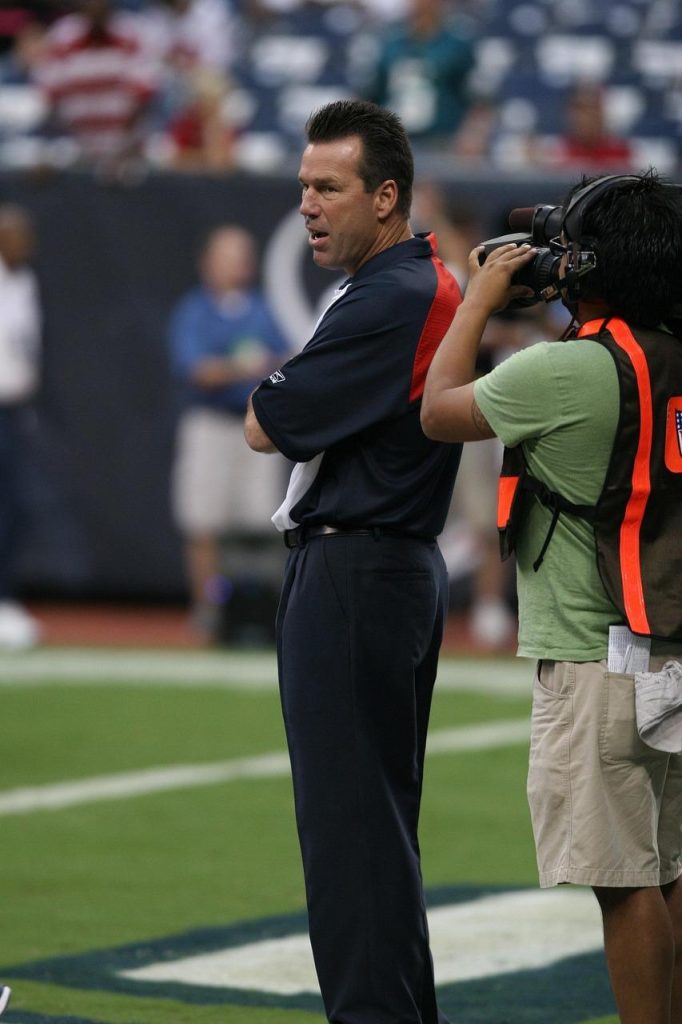In the high-stakes world of NFL training camps, intensity often runs as high as the ambitions on the field. Recently, Philadelphia Eagles head coach Nick Sirianni found himself navigating choppy waters after a strenuous practice session reminiscent of former coach Andy Reid’s famously grueling methods. Reports emerged of fights breaking out amid the brutal drills, casting a shadow over the camp’s disciplined façade. Yet, through the turmoil, the Eagles demonstrated resilience and unity, ultimately prevailing on the field. This incident has prompted Sirianni to clearly distance himself from Reid’s hardline approach, signaling a new chapter in the team’s culture-one that balances toughness with control.
Nick Sirianni Addresses the Controversy Surrounding Andy Reid’s Intense Practice Drill
In the wake of last week’s contentious practice drill that sparked debates across the league, Nick Sirianni was quick to clarify his stance, striking a delicate balance between acknowledging intensity and advocating for player safety. While Andy Reid’s demanding and highly physical regimen made headlines after reports indicated multiple scuffles broke out among players, Sirianni emphasized that such levels of aggression run counter to the philosophy he champions. “We want our practices to be competitive but controlled,” Sirianni stated, highlighting that the ultimate goal remains fostering teamwork and resilience without compromising the well-being of the athletes.
Sirianni’s comments reflect his effort to distance the Eagles’ coaching approach from the scrutiny surrounding Reid’s controversial drill. He underscored several key principles that guide his mechanics:
- Prioritizing discipline over disorder to ensure drills instill respect and accountability rather than chaos.
- Maintaining open communication with players to gauge both physical and mental readiness.
- Adapting practice intensity intelligently to mirror game-day demands without tipping into unnecessary hostility.
Despite the drama off the field, the Eagles’ recent victories underscore that their collective intensity and focus remain intact-albeit channeled more constructively under Sirianni’s guidance.
Analyzing the Impact of High-Intensity Drills on Team Dynamics and Player Safety
Nick Sirianni’s public distancing from Andy Reid’s high-intensity drill marks a pivotal moment in evaluating the balance between rigorous training and maintaining a cohesive team environment. While such drills are often designed to simulate game-day pressures and sharpen competitive edges, the resulting altercations highlight a darker side: the potential erosion of trust and camaraderie among players. Coaches and trainers must therefore ask themselves if the intensity that’s meant to foster resilience is instead sparking unnecessary aggression and fracturing locker room unity.
From a player safety perspective, the physical and emotional toll of these “brutal” sessions cannot be underestimated. Beyond the risk of injury, they may contribute to mental fatigue and heightened stress levels, which ultimately impact performance and well-being. Key takeaways for management and coaching staff include:
- Prioritizing controlled intensity: Structured drills that challenge without crossing the line into chaos.
- Monitoring interpersonal dynamics: Early identification of conflicts before they escalate physically.
- Encouraging open communication: Creating safe spaces for players to express concerns about drill intensity.
- Integrating recovery and mental health: Ensuring balance between physical pushing and psychological support.
Balancing Competitive Edge and Discipline: Recommendations for Coaching Strategies
Finding the middle ground between maintaining a fierce competitive spirit and ensuring a respectful, disciplined environment is a delicate art in coaching. While high-intensity drills can push players to their limits and foster resilience, there is an unmistakable risk of crossing into chaos if not carefully managed. Nick Sirianni’s decision to distance himself from the kind of brutal, rumor-infused practices epitomized by Andy Reid’s past underscores the importance of cultivating toughness without sacrificing team harmony. Coaches must prioritize emotional regulation, making sure that intensity fuels performance rather than physical altercations or animosity.
Effective coaching strategies should therefore incorporate methods that harness aggression constructively, such as:
- Structured conflict resolution: Implement clear protocols for managing disputes immediately before they escalate.
- Controlled competitive scenarios: Design drills that emphasize skill under pressure, but within defined boundaries.
- Psychological preparation: Equip players with mental tools to channel intensity positively.
- Consistent communication: Foster open dialogue between players and coaching staff to preempt tension.
By embedding these pillars into their coaching philosophy, leaders like Sirianni demonstrate that success isn’t solely determined by how hard a team trains, but by how thoughtfully they do so-balancing drive with discipline to keep victories on the scoreboard and fights off the field.
How the Eagles Maintained Focus and Secured Victory Amid Practice Turmoil
Despite the chaos that erupted during practice, Nick Sirianni demonstrated remarkable leadership in steering the Eagles back to their core mission-winning on game day. Instead of engaging with the distractions of physical altercations, Sirianni emphasized mental resilience and tactical discipline, ensuring players stayed grounded in their roles. His approach was not to condone the turmoil but to redirect the team’s energy toward preparation, emphasizing that individual emotions must never overshadow collective goals.
Key strategies that helped maintain focus included:
- Structured communication-Clear, calm instructions were prioritized to replace tension with clarity.
- Focused drills-Practice sessions shifted to execution-oriented activities, minimizing confrontation chances.
- Team accountability-Players were reminded of their responsibility toward the Eagles’ legacy and each other.
By blending strong leadership with precise, purposeful training, the Eagles transformed potential disruption into a unified front, ultimately securing a triumphant victory that underscored their resilience in adversity.
As the dust settles on a workout rife with tension and unexpected confrontations, Nick Sirianni’s careful distancing from Andy Reid’s infamous drill underscores a nuanced leadership approach within the Eagles’ camp. While the physicality of the session sparked clashes that tested team cohesion, the Eagles’ resilience prevailed on game day, proving that unity and performance extend far beyond the drills. In the high-stakes world of the NFL, the balance between discipline and harmony remains delicate-but as Philadelphia’s recent triumph illustrates, it’s a balance worth striving for.


